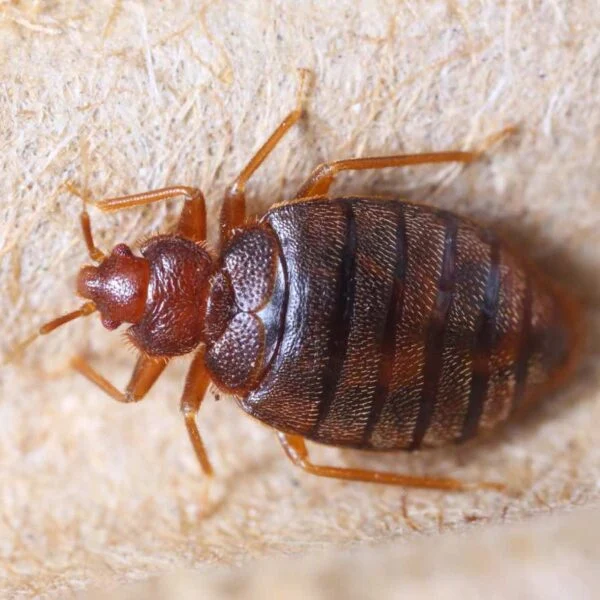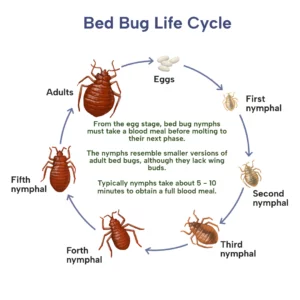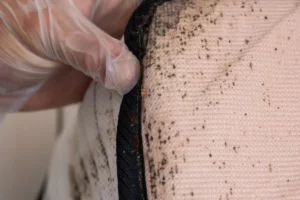



Bed bugs are a homeowner’s worst nightmare. If the recent surge of bedbugs infestations in Paris has you spooked, read on.
Though small in size, bed bugs can quickly become a big problem if left unaddressed. First, it’s important to know a bit about these tiny (creepy and ghastly) intruders:
1. Appearance: Bed bugs are small, flat, reddish-brown insects that measure about 5-7mm in length. They are oval-shaped and often resemble apple seeds.

2. Feeding Habits: Bed bugs feed on the blood of humans and animals, mainly at night while their hosts are asleep. Here’s how they grow:

3. Elusive Nature: Bed bugs are nocturnal and adept at hiding in tiny crevices, making them difficult to detect.
Methods of Entry Into Your Home
1. Travel: One of the most common ways bed bugs make their way into homes is through travelers. Bed bugs can hitch a ride on luggage, clothing, and personal belongings when you stay in an infested hotel, hostel, or vacation rental.
2. Second-Hand Furniture: Another frequent entry point is used furniture or items acquired from garage sales, thrift stores, or online marketplaces. Bed bugs can hide in the seams, cracks, and upholstery of couches, chairs, mattresses, and other furniture.
3. Visitors and Guests: House guests may unknowingly bring bed bugs with them: on their bags, backpacks, or clothing.
4. Shared Laundry Facilities: Bed bugs can spread from one person’s infested clothes to another’s in shared laundry facilities.
5. Neighboring Infestations: Bed bugs are expert travelers within apartment buildings and shared living spaces. If a neighboring unit is infested, bed bugs can easily migrate through wall voids, electrical outlets, or shared pipes.
How to Detect Bed Bugs
Early detection is key to preventing a full-blown infestation. Here’s how to check for them.
Step 1: What You’ll Need
Step 2: Know what you’re looking for
Look for live bugs, molted exoskeletons, or tiny reddish-brown fecal spots.
The droppings consist of digested blood, so they will start red, and then get darker once they dry. The spots will appear rust colored or black, and are about the size of a dot from a marker. Some people say they look like ink stains.

Step 3: Prepare Your Space
Before you start inspecting, remove all bedding, including sheets, pillows, and blankets to expose potential hiding spots
Step 4: Check the Bed
Step 5: Inspect Other Furniture
Step 6: Check Other Areas
Step 7: Collect Samples
If you find any suspicious bugs or signs of bed bug activity, collect samples in plastic bags or containers for further inspection. Take clear photos of any specimens for identification to be sent to a professional bed bug/pest control service company.
If you believe you have bed bugs, you’ll need to call in a professional. We’ll share prevention and extermination tips next week.

AUSTIN and CLARKSVILLE, Ind., October. 16, 2023 / — Armadillo + Chaiz: Innovating the warranty ...



Subscription-based protection for when major
appliances and systems break down.
